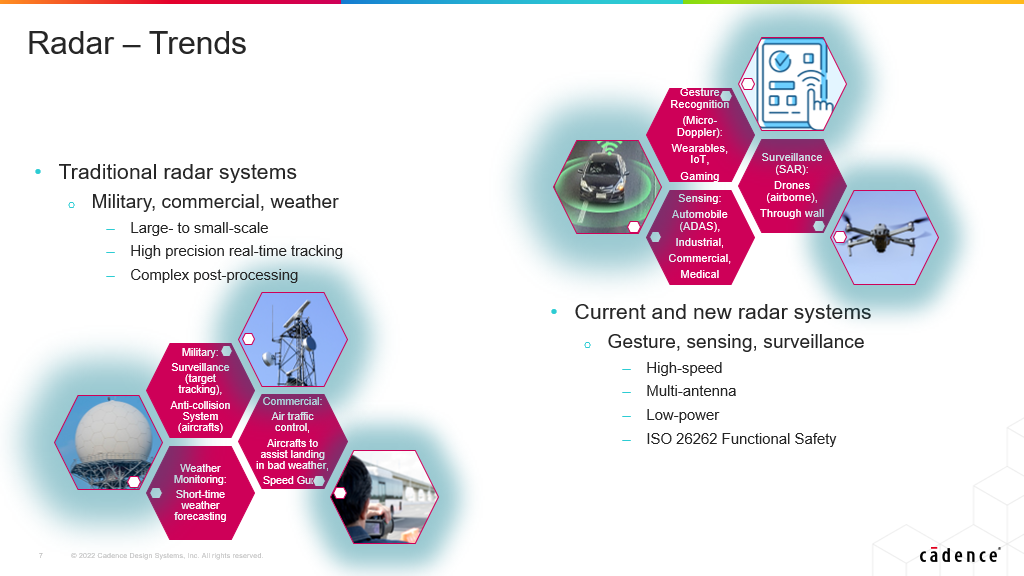In the flood of CPU and GPU announcements in pursuit of new technology advances, it is easy to lose track of another kind of platform – DSPs. Digital signal processors, once a niche platform for specialized applications, are now front and center in some of the hottest technologies. Because their strength in signal processing has become key to making those technologies work. Radar imaging is one good example.

4D imaging
In automotive applications we all know about visual imaging and object detection. Cool stuff but it suffers from a couple of important drawbacks. First, it only works well in good seeing conditions, not so well at night or in bad weather. Second, it is primarily 2-dimensional and has no sense of relative velocity or even of distance. It detects an object but is that object near or far away? Is it stationary or moving towards you rapidly?
LIDAR gets a lot of press as a complementary 4D detection method (3 spatial dimensions plus velocity). This can work in bad weather and does provide relative velocity. Radar, also able to sense velocity, was still seen as a useful but coarse technique. Good enough for “something is approaching rapidly from the front or the back of the car, but that was about it.
Radar steps up to imaging
But then radar designers got ambitious with their own 4D option, now able to sense distance and direction in a 2D plane, relative velocity and also vertical information (will I fit under that overpass?) The design starts with an array of up to 200 antennae which can transmit and receive radar signals. These are still wide beams, now combined through a technique known as beamforming to separate distinct reflections with high accuracy (<1o). This is the same MIMO technique used in 5G.
After noise filtering and corrections, this data is aggregated into a 4D point cloud, similar to the LIDAR approach and object detection, sensor fusion and other operations can run on that data. Following the trend to smart sensing, radar imaging now does most of this analysis at the sensor to avoid latencies and communication overhead in the car network. This sensing is central to safety, so the computation must be fast yet it also must be economical on power.
DSPs – the right solution to radar imaging
Start with beamforming. This is an ultimate signal processing application – teasing a fine resolution signal out of multiple broad resolution reflections. It requires floating or fixed-point analysis because you’re dealing with analog signals after all. Complex signals, if the radar uses complex modulation. And massive parallelism, processing input from ~200 antennae. This task is far beyond the capabilities of CPUs and GPUs but plays directly to the strengths of DSPs.
Other platforms can handle building the point cloud and inferencing . But if you’re already in a DSP that can also handle these functions very well, why switch? Adding more components increases the bill of materials and cost, increases latencies and power and challenges reliability. DSPs are already widely used in machine learning applications with well-established interfaces to all the common ML networks.
Which suggests that platforms like the Tensilica ConnX 110 and 120 IP need a closer look. These compact low-energy platforms improve upon the already popular BBE32EP and BBE16EP platforms, adding to a proven product line for radar, lidar and communications. With a track record in radar imaging with companies like NXP and with differentiated strengths in processing complex data, Tensilica looks like a strong contender in this space.
You can learn more about the ConnX product family HERE, HERE and HERE.
Share this post via:





Comments
There are no comments yet.
You must register or log in to view/post comments.